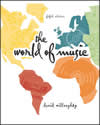Chapter 10 Music to 1600 Early genres of Western European classical music:
Gregorian chant, mass, motet, and madrigal The beginnings of the Western musical tradition am traced to the ancient Greek writers who began our vocabulary for discussing and describing music. The beginnings of the repertoire coincide with the establishment of the religious ritual in the Roman Catholic church. The predominant style of music was the chant. The Renaissance is portrayed as an age of magnificent flourishing in the arts and letters and an age of great choral music. Secular influences became important, and arts patronage began shifting from the church to the courts. The impact on music of the Reformation and the Counter-Reformation is discussed. Attention is given to the shift from Latin texts to the vernacular, to the role of the congregation in church music, to the development of the chorale melody as an alternative to chant, to the emerging of other styles of compositions based on these melodies, and to the subsequent role that Palestrina played in improving the standards of music for the Catholic church. Musical characteristics of the chant, motet, polyphonic settings of the mass, and madrigals as well as instrumental genres and styles are discussed. The cantus firmus, imitative counterpoint, antiphonal music, and polychoral writing are among other terms and concepts presented. The chapter presents Gregorian chants and the music of Palestrina, Tallis, Morley, Dowland, and others. Goals for Listening - Describe melodic shape (contour) and rhythm of chant
- Understand the relationship of music and words
- Recognize flexible pulse and rhythm
- Describe phrase structure
- Recognize and describe monophonic and polyphonic textures
|



 2003 McGraw-Hill Higher Education
2003 McGraw-Hill Higher Education

 2003 McGraw-Hill Higher Education
2003 McGraw-Hill Higher Education